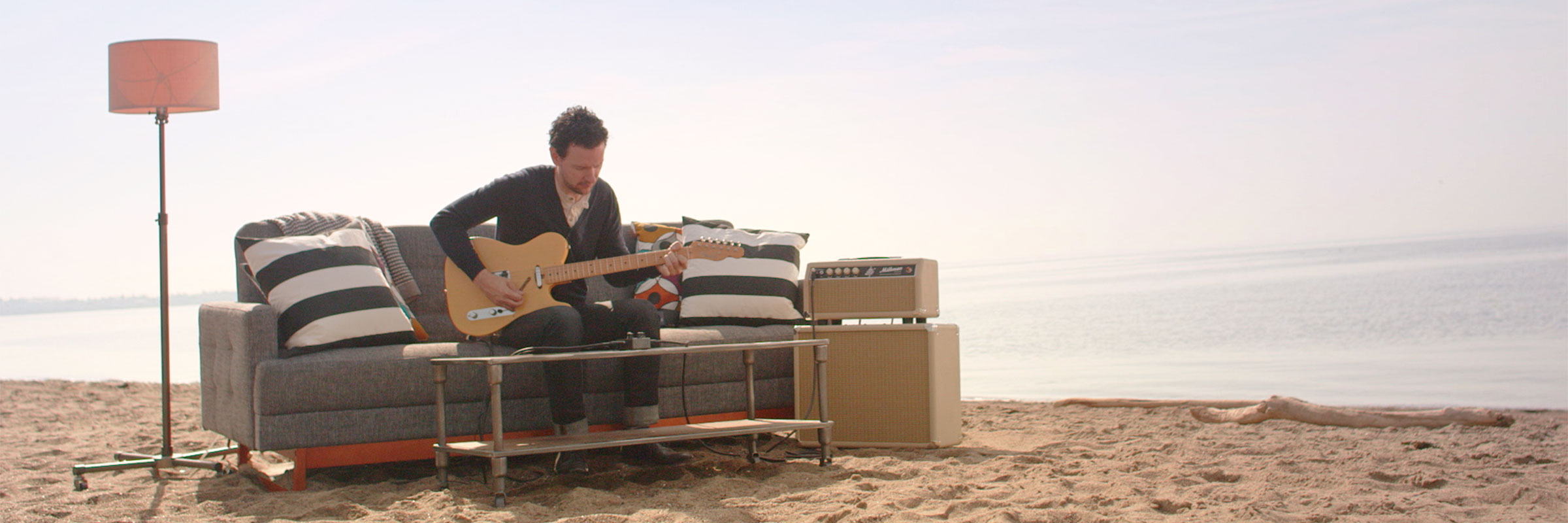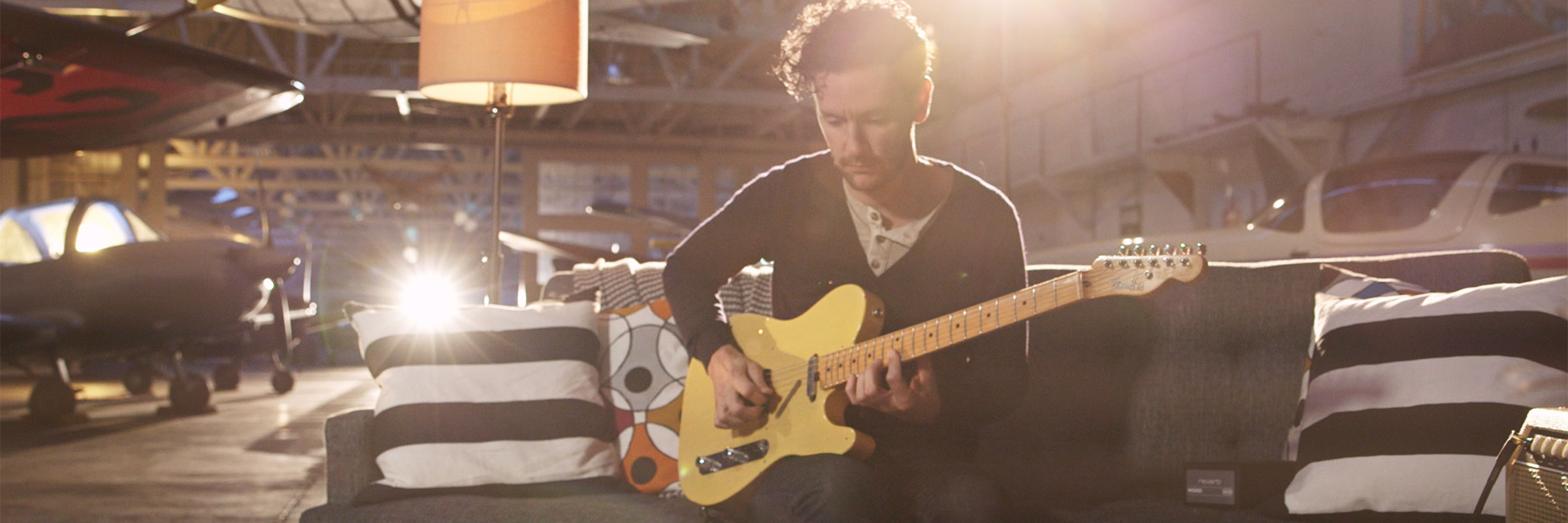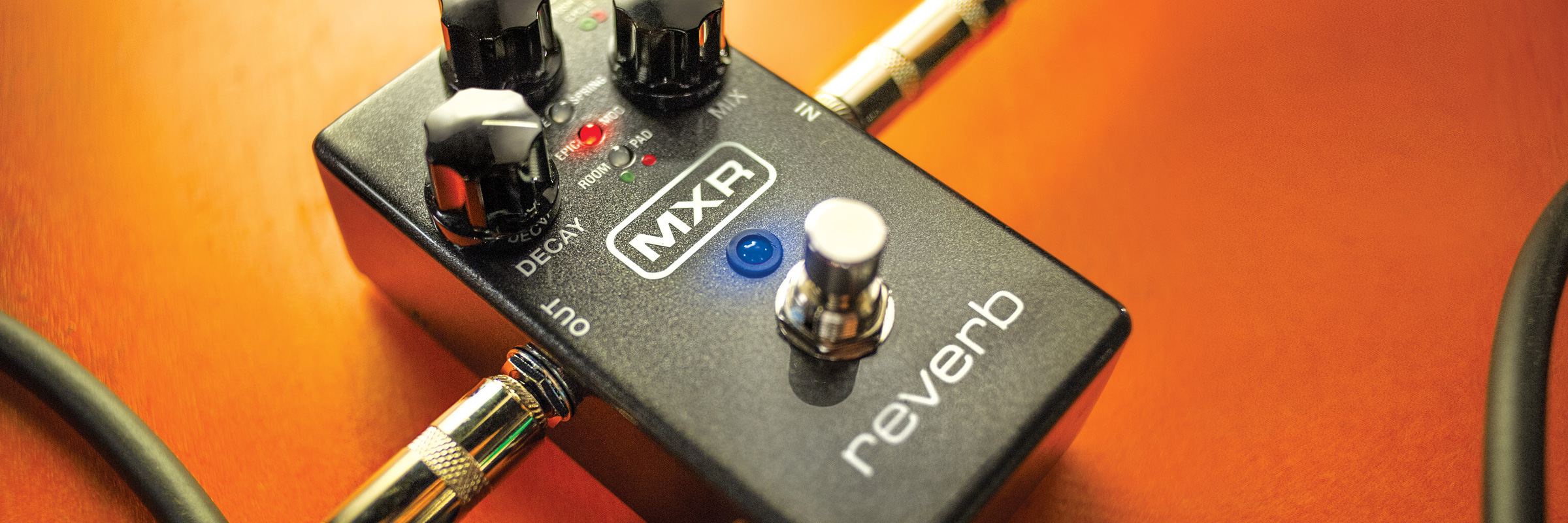Reverb is that sense of place and depth you hear when sound is reflected off of solid surfaces. Architects have been designing concert halls and other enclosed spaces to enhance this effect with live music for more than a hundred years. Recorded music, however, can sound flat and unnatural if it doesn’t sound as if it actually exists in a physical space, so musicians and producers have relied on a number of methods to recreate the sonic characteristics of playing in acoustically rich environments.

With the advent of recorded music, one of the first solutions to the “flat sound” problem was to play music inside of an enclosed space with a microphone sending the signal to a mixing board. The first of these “reverb chambers” was a bathroom, but specially designed rooms were eventually built into the recording studios themselves.
The Room setting captures the sound of those reverb chambers, adding subtle body and projection to your guitar tone at shorter decay times while longer decay times yield rich organic space that doesn’t wash out. Think old blues and jazz recordings. This setting is also great for livening up a dead recording sound.

Plate-based reverb—which creates its effect through the vibration of large, thin metal plates—was the next step in studio reverb evolution. It became the standard for recording studios because of its clean, bright sound, and, while quite heavy, they could actually be moved around.
The Plate setting provides a shimmering smooth wash of space that’s a go-to choice from the studio recording world. Use this setting to give your signal a classically lush, “hi-fi” sound, make up for dead venue acoustics when playing onstage, liven up a flat recorded sound, or bind all of the elements of your tone together.

Spring-based reverb as we know it today uses a transducer to vibrate one or more springs while a pickup transmits the generated sounds. Whereas plate units were large and expensive, spring units were small enough to put into amplifiers, and their low cost meant that the average guitar player could afford them. This style became a crucial component of old school surf rock tone.
Use this setting to recreate the classic bounce and twang of classic amp-style reverb. Like the Room and Plate styles, Spring style is great for revitalizing a flat recorded sound, and like the Plate style, works great as a “tone binder.”

The Epic setting sounds like you’re playing in a large, voluminous space such as a cathedral or a cavern. Think Pink Floyd. This setting is perfect for creating atmospheric, otherworldly environments.
Spring-based reverb as we know it today uses a transducer to vibrate one or more springs while a pickup transmits the generated sounds. Whereas plate units were large and expensive, spring units were small enough to put into amplifiers, and their low cost meant that the average guitar player could afford them. This style became a crucial component of old school surf rock tone.
Use this setting to recreate the classic bounce and twang of classic amp-style reverb. Like the Room and Plate styles, Spring style is great for revitalizing a flat recorded sound, and like the Plate style, works great as a “tone binder.”

The Mod setting combines smooth plate reverb with richly organic modulation in the feedback path. Use this setting to get classic shoegazer tones, liven up a dead recording, or create fluid, ethereal textures.

The Pad setting generates long synth sounds with a unique combination of sub-octave and octave-up with echoes mixed with synth/organ modulation and reverb, unlocking an expressive tonal palette that’s perfect for creating rich, arresting soundscapes.
Want a closer look at this pedal’s advanced features? Check out our own demo and another one from our buddy Paul Riario from Guitar World Magazine below.





